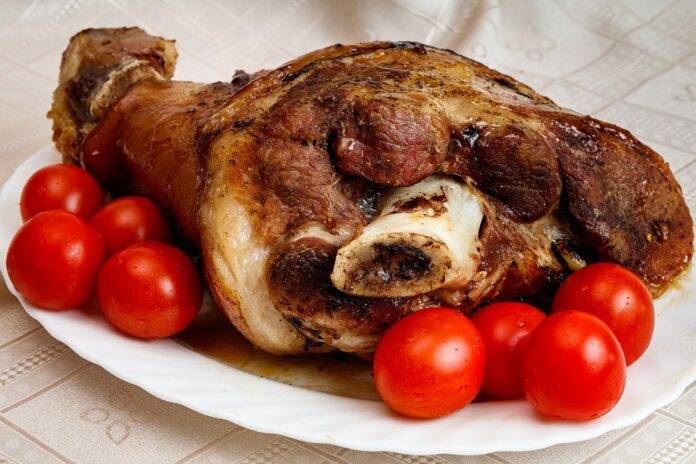Introduction
The global swine production industry has been undergoing significant changes over the past few years, driven by factors such as population growth, rising incomes, and increasing demand for meat products. By 2030, certain countries are expected to dominate this sector, driven by advancements in technology, feed efficiency, and animal husbandry practices. This report will explore the top 10 countries anticipated to lead in swine production by 2030, providing insights into their production capacities, financials, and market trends.
1. China
China has long been the world’s largest producer of pork, accounting for approximately 50% of global pork production. According to the Food and Agriculture Organization (FAO), China’s pork production is expected to reach 57 million metric tons by 2030. The country has been investing heavily in biosecurity measures and modern farming techniques to increase productivity. For instance, in 2021, China’s pork production rebounded from the African Swine Fever (ASF) epidemic, showcasing its resilience.
Financial Insights
The Chinese pork market is projected to grow at a compound annual growth rate (CAGR) of 3.5% from 2023 to 2030. The market was valued at $128 billion in 2021, and it is expected to reach approximately $163 billion by 2030. Key players include WH Group, the world’s largest pork producer, which reported revenues of $25 billion in 2020.
2. United States
The United States is the second-largest pork producer, with a projected output of 13 million metric tons by 2030. The U.S. pork industry benefits from advanced genetics, nutrition, and management practices, which have improved production efficiency. The USDA reports that U.S. pork production will continue to rise due to increasing exports and domestic demand.
Financial Insights
In 2021, the U.S. pork market was valued at approximately $23 billion, expected to grow at a CAGR of 2.8% to reach about $30 billion by 2030. Major players like Smithfield Foods and Tyson Foods dominate the market, with Smithfield reporting revenues of $15 billion in 2020.
3. Brazil
Brazil is the third-largest pork producer, with production expected to reach 5 million metric tons by 2030. The country has been focusing on improving its export capabilities, especially to Asia. Brazilian pork is gaining popularity due to its competitive pricing and quality.
Financial Insights
The Brazilian pork market was valued at $7 billion in 2021, with expectations to grow at a CAGR of 4% through 2030. Companies like JBS and BRF are major contributors to this growth, with JBS reporting revenues of $52 billion in 2020.
4. Germany
Germany is Europe’s leading pork producer, with production expected to reach 5 million metric tons by 2030. The country has stringent animal welfare regulations, which may impact production costs but also enhance product quality.
Financial Insights
The German pork market was valued at approximately $10 billion in 2021, with a projected CAGR of 2.5% through 2030. Major players include Tönnies and Vion, both of which are heavily involved in the export market.
5. Spain
Spain has emerged as a significant player in the European pork market, with expectations of producing 4 million metric tons by 2030. The country has benefitted from increased demand for high-quality Iberian pork, which has gained international recognition.
Financial Insights
The Spanish pork market was valued at around $8 billion in 2021, projected to grow at a CAGR of 3% to reach $10 billion by 2030. Key players include Campofrío and El Pozo, both of which have strong export footprints.
6. Vietnam
Vietnam is rapidly increasing its pork production, with estimates of reaching 4 million metric tons by 2030. The country has been modernizing its farming practices and investing in better genetics to boost productivity.
Financial Insights
The Vietnamese pork market was valued at $5 billion in 2021, expected to grow at a CAGR of 5% through 2030. Major companies include Masan Group and CP Vietnam, which are expanding their production capacities.
7. France
France is one of the largest pork producers in Europe, with production expected to remain stable at around 2 million metric tons by 2030. The French market is distinguished by its focus on high-quality, sustainable pork production.
Financial Insights
The French pork market was valued at approximately $6 billion in 2021 and is projected to grow at a CAGR of 2% to reach about $7 billion by 2030. Major players include Groupe Doux and Cooperl Arc Atlantique.
8. Russia
Russia is increasing its pork production capacity, aiming for approximately 3 million metric tons by 2030. The government has been encouraging domestic production to reduce reliance on imports.
Financial Insights
The Russian pork market was valued at $4 billion in 2021, with a growth rate of 3% anticipated through 2030. Key players include Miratorg and Cherkizovo, both of which are expanding their production facilities.
9. Philippines
The Philippines is also projected to enhance its pork production, aiming for 2 million metric tons by 2030. However, the country faces challenges such as disease outbreaks and infrastructure issues, which could hinder growth.
Financial Insights
The Filipino pork market was valued at $3 billion in 2021, with a projected CAGR of 4% through 2030. Companies like San Miguel Foods are significant players in this market.
10. Canada
Canada is expected to produce around 1.5 million metric tons of pork by 2030. The country focuses on high-quality pork production with strong export markets in Asia and the United States.
Financial Insights
The Canadian pork market was valued at approximately $2 billion in 2021, with a CAGR of 2.5% projected through 2030. Major companies include Maple Leaf Foods and Olymel.
Conclusion
The global swine production landscape is evolving, with various countries poised to enhance their production capabilities by 2030. Factors such as investment in technology, improved farming practices, and market demand will play crucial roles in shaping the future of swine production. Understanding these dynamics will be essential for stakeholders aiming to navigate this complex and rapidly changing industry.
[Read More: The State of the Global Pork, Swine, Pig, and Bacon Industry: A Comprehensive 2025 Report]



